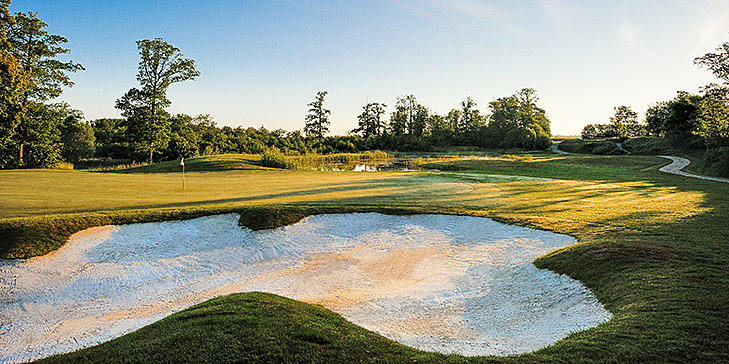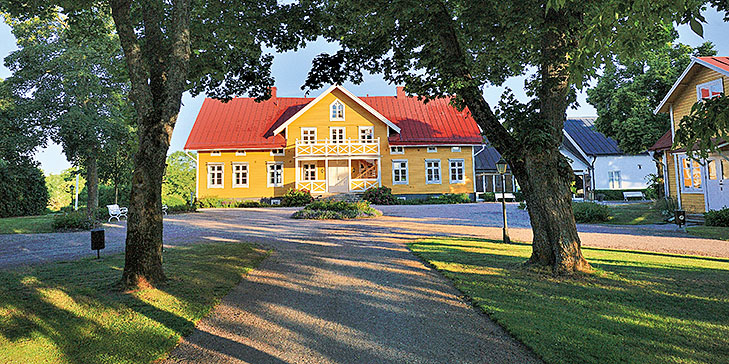New owners are revitalising Sweden’s most successful golf resort, and now architect Christian Lundin is set to do the same for its two courses. Adam Lawrence paid a visit to Ekerum
Businesses content with standing still usually find themselves going backwards. The Darwinian nature of capitalism means that what was quite good enough two years ago will barely suffice today, and is likely to be way past its sell-by date in five years time. Look at any industry if you doubt this. The best cars on the market ten years ago would be hopelessly outclassed by the vehicles manufacturers now produce, and in other sectors, such as IT, progress is even more rapid. It’s a dog eat dog world.
Perhaps the golf business progresses more slowly than some. Nonetheless, the same pressures exist. With courses competing for members, guests and corporate visitors, finding a way to improve your offer is always a priority.
The Ekerum resort on the Swedish island of Öland is a classic example. Developed in the early 1990s, it rapidly became the most popular golf resort in the country, with two eighteen hole courses designed by architect Peter Nordwall, a fine beach and other activities, and a range of accommodation, including well laid out two bedroomed apartments.
Successful though it was, Ekerum has changed hands twice in its life. Now, its latest owners, a consortium of Swedish investors who also own the PGA of Sweden National complex outside Malmo, have resolved to take the property to the next level. Much of the accommodation has been refurbished, a new housing estate is set to start construction this year, and a 200 bedroom hotel is also in the works.

Resort CEO Magnus Lagerlöf, who has run the property since it was acquired by its present owners, around four years ago, says these developments are essential if Ekerum is to retain its position as Sweden’s leading resort. “The resort used to close for several months in the winter,” he says. “But we decided, a few years ago, we needed to operate year round. Although it’s cold here in the winter, Öland is the sunniest area in Sweden, and there is plenty to do even out of season. Plus we have invested heavily in marketing to the corporate sector, and our conference business is up year-round.”
Golf architect Christian Lundin of the (re)Golf firm has been hired to advise on improvements to the two courses, named Lange Jan (Long John) and Lange Erik. Additionally, Lundin has been tasked with making a few changes to the courses in order to accommodate the planned houses. As a first step, Nordwall’s par three sixteenth has been replaced by a new par three on previously unused land, and Lundin has built a new green for the par four seventeenth, which will allow an access road for the houses to be fitted in.
Nordwall has a reputation as a bold designer. Ekerum supports that reputation, with greens that are both extremely large (many are in excess of 1,000 sq m) and extravagantly contoured. His fairway corridors are masssive, often around 100m in width, and the property as a whole has a feeling of remarkable scale (the two courses together occupy in excess of 160 ha). Lundin’s new par three sixteenth, which can be stretched to around 180m from the back tee, also features a strongly contoured putting surface, with significant slopes dividing up the more level areas intended for hole locations. Two bunkers, rather more intricately shaped that Nordwall’s, which are mostly simple circles or ovals, protect the right side pins, while severe runoffs defend the left. Where his green differs from many of Nordwall’s is the clean edge he has left at the back: many of the Nordwall greens are backed by framing mounds. This is OK in moderation, but too often the mounds conceal the natural terrain, as at the par five fourth, where an ancient wall built of native Öland stone sits behind the green, but blocked out by the unnatural wavy mounds.

Around the turn of Lange Jan, the course enters a stretch of holes laid out on beautiful sandy, heathery terrain, reminiscent of the Surrey heathland courses. The course’s long par five seventh opens this sequence, a brutal hole stretching to over 550m from the tips, with water to the right of the drive landing zone and a protected environmental area, effectively another water hazard, to the left. This hole illustrates another of Ekerum’s problems; though a golf resort, the courses are both extremely difficult for shorter hitting golfers, especially women. To that end, Lundin has built new forward tees on many holes, delivering on the Tee it Forward message now promoted by the USGA.
Nordwall’s routing of the two courses is excellent, enabling both courses to move from the resort area on top of the hill almost down to the edge of the Baltic Sea. Additionally, the wide corridors he designed originally have two priceless benefits: they make the courses forgiving, even for fairly wild hitters, and they provide huge opportunities to use hazards to define playing strategies. A good example of this is the par four second hole on Lange Jan, where a massive landing area then turns down and to the right to the green. Lundin wants to rebunker this hole, offering a safe, but longer route up the left side of the fairway, and a bolder, straighter option down the right. Width is necessary for strategy; there are many opportunities for strategy at Ekerum.
The most exciting transformation, though, could still be to come. A large proportion of Öland is covered by limestone barrens, wild and open landscapes where plants and birds thrive, and much of which is ranked by UNESCO as a World Heritage Site. Lundin wants to redo the Lange Jan course in a more native style, using huge open sandy areas planted with clumps of marram, heather and the island’s own variety of gorse to create what he describes as ‘an homage to Öland’. If that happens, he will achieve three important goals: he will create differentiation between the two courses, he will improve the environmental value of the resort, and he will give the resort something new to market. It is an enticing prospect.
This article first appeared in Issue 36 of Golf Course Architecture - April 2014